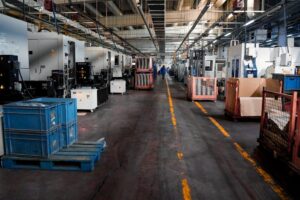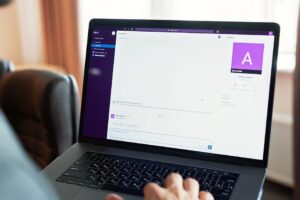AI-Powered Talent Analytics for Smarter Workforce Planning
Unlock the potential of your workforce with the transformative power of AI-enhanced talent analytics, driving smarter, data-driven HR decisions.
Introduction
In today’s fast-paced business environment, effective workforce planning is crucial for organizations that want to stay competitive and agile. Traditional methods of managing talent often fall short in providing the insights companies need to predict workforce needs, identify skill gaps, and enhance employee retention. That’s where AI-powered talent analytics comes into play. By leveraging artificial intelligence and big data, businesses can uncover powerful insights about their workforce, enabling smarter hiring, better employee engagement, and more strategic workforce planning overall.
What is AI-Powered Talent Analytics?
AI-powered talent analytics refers to the use of artificial intelligence technologies-such as machine learning algorithms, natural language processing, and predictive analytics-to analyze vast quantities of workforce data. This technology evaluates employee performance, engagement levels, recruitment data, and other HR metrics to provide actionable insights.
Unlike traditional HR analytics, which are often descriptive and retrospective, AI-based solutions are predictive and prescriptive. They not only help organizations understand the current state of their workforce but also forecast future trends and suggest optimized solutions.
Key Benefits of AI-Powered Talent Analytics
Integrating AI into talent analytics software transforms workforce planning and delivers multiple benefits, including:
- Enhanced Recruitment Processes: AI analyzes candidate data to match the best-fit individuals quickly and reduce time-to-hire.
- Predictive Workforce Planning: Forecast talent needs based on business goals, retirements, turnover rates, and market trends.
- Improved Employee Retention: Identify early warning signs of employee disengagement and turnover risk for timely intervention.
- Skills Gap Analysis: Detect current and future skill shortages and tailor training programs accordingly.
- Data-Driven Diversity & Inclusion: Drive objective insights to improve workplace diversity and equity.
- Optimized Performance Management: Continuously analyze performance metrics to align goals and reward high performers.
How AI-Powered Talent Analytics Enhances Workforce Planning
Workforce planning is the foundation for ensuring that the right people with the right skills are in the right place at the right time. Here’s how AI-driven analytics improves each stage:
1. Talent Acquisition
AI algorithms sift through applications faster than any human recruiter, ranking candidates by their match to the job description and company culture. This speeds up the hiring process and improves quality of hire.
2. Talent Development
By monitoring employee performance and engagement data, AI identifies skill gaps and recommends personalized upskilling or reskilling programs. Learning initiatives become more targeted and effective.
3. Workforce Optimization
AI predicts employee turnover risks and helps leaders proactively engage with affected workers to reduce attrition. It also optimizes capacity planning by forecasting hiring needs and restructurings based on market conditions.
4. Succession Planning
Using data on employee performance, potential, and leadership traits, AI helps identify the best candidates for promotion or succession, ensuring leadership continuity.
Practical Tips for Implementing AI-Powered Talent Analytics
- Start with Clean Data: Ensure your HR data is accurate and up-to-date for reliable insights.
- Define Clear Objectives: Align AI initiatives with specific HR goals like reducing turnover or speeding recruitment.
- Choose the Right Tools: Select AI-powered platforms that integrate well with your existing HRIS and talent management systems.
- Train HR Staff: Equip your HR team with data literacy skills so they can interpret and act on AI-generated insights effectively.
- Maintain Ethical Standards: Use AI responsibly by monitoring biases and ensuring transparent, fair decision-making.
- Iterate and Improve: Continuously monitor AI outcomes and refine data models for better accuracy over time.
Case Study: How a Global Tech Company Transformed Workforce Planning
A leading global technology company implemented an AI-powered talent analytics platform to enhance their workforce planning strategies. Here’s a quick snapshot:
| Challenge | Solution | Results |
|---|---|---|
| High turnover in key engineering departments | AI algorithms analyzed attrition patterns and predicted high-risk employees | 20% reduction in turnover and improved employee engagement scores |
| Long hiring cycles for specialized roles | AI-driven candidate screening and predictive matching | 30% faster time-to-hire and better job fit |
| Undefined succession plans for leadership roles | AI-based assessment of internal talent potential | Clear succession pipeline and stronger leadership bench |
First-Hand Insights: What HR Leaders Say About AI Talent Analytics
Anna M., Chief HR Officer: “Using AI-powered talent analytics revolutionized how we understand our workforce. The predictive insights have helped us proactively address employee engagement challenges before they turn into major issues.”
Michael T., Talent Acquisition Manager: “The ability to quickly identify candidates who align with our company culture has cut our hiring time in half and increased retention in critical roles.”
Sophia L., Head of Learning & Development: “With data-driven skill gap identification, we’ve created targeted training that genuinely boosts performance and career growth.”
Conclusion
AI-powered talent analytics is no longer a futuristic concept-it is rapidly becoming an essential tool for smarter workforce planning. By harnessing the power of AI, organizations gain accurate insights into talent trends, predictive capabilities to forecast workforce needs, and actionable guidance to optimize recruitment, retention, and development strategies.
Businesses that adopt AI in their HR processes can expect to see improved decision-making agility, healthier employee engagement, and greater overall productivity. To remain competitive in the evolving world of work, implementing AI-driven talent analytics is a strategic investment that delivers measurable ROI and long-term business success.











